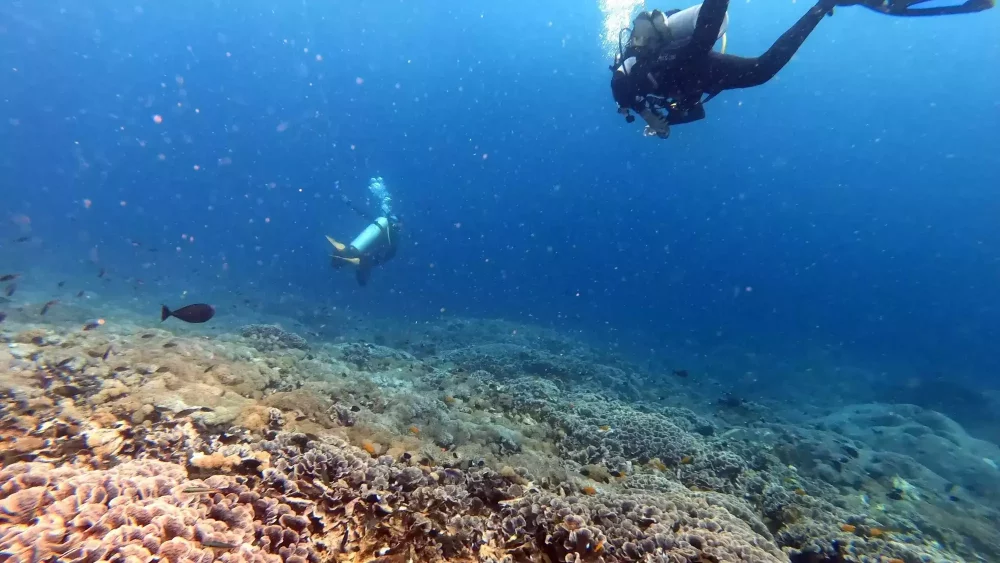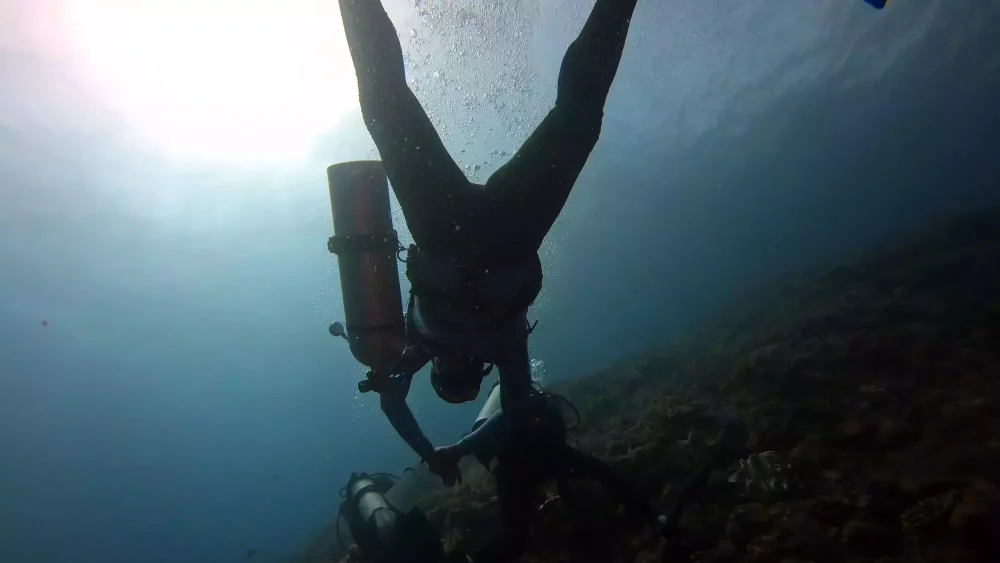Scuba diving offers us the opportunity to explore the wonders of the underwater world. Yet, behind the scenes, there’s a fascinating science at play – the physics of fluid dynamics. Whether you’re a seasoned diver preparing for exams, a beginner just starting your scuba journey, or someone with a curious mind, this guide will make the complex topic of fluid dynamics easy to understand and its relevance to scuba diving crystal clear.
What Is Fluid Dynamics?
Fluid dynamics is the branch of physics that studies the behavior of fluids – liquids and gases – when they’re in motion. In scuba diving, we’re primarily interested in the behavior of water as it interacts with divers and equipment.
Buoyancy: The Magic Word
One of the key principles in fluid dynamics that every scuba diver must grasp is buoyancy. Buoyancy is what keeps us afloat underwater, and it depends on two forces: gravity and buoyant force.
- Gravity: This force pulls us downward and affects our weight.
- Buoyant Force: This upward force is exerted on any object submerged in a fluid. It’s the reason why objects appear lighter underwater.
Archimedes’ Principle
Archimedes’ Principle is the foundation of buoyancy. It states that “an object immersed in a fluid experiences a buoyant force equal to the weight of the fluid displaced by the object.” In simple terms, if you displace a certain volume of water by submerging, you’ll experience an upward force equal to that volume of water’s weight.
In scuba diving, our buoyancy is controlled by adjusting the volume of water we displace. Here’s how it works:
- Positive Buoyancy: You displace more water than your body’s weight, making you rise towards the surface.
- Neutral Buoyancy: You displace an amount of water equal to your body’s weight, allowing you to hover in place.
- Negative Buoyancy: You displace less water than your body’s weight, causing you to sink.
Equipment and Buoyancy Control
Several pieces of scuba gear help you control your buoyancy:
- Buoyancy Control Device (BCD): Inflating the BCD adds volume to your body, reducing your weight, and making you rise. Deflating it reduces your volume, increasing your weight, and allowing you to sink.
- Weights: Adding or removing weights helps you fine-tune your buoyancy.
- Breathing: Inhaling increases your volume and buoyancy, while exhaling reduces it. Controlled breathing plays a crucial role in buoyancy control.
Drag and Streamlining
Understanding the effects of fluid dynamics can help you move more efficiently through the water. Drag is the resistance you encounter when moving through a fluid. To minimize drag:
- Keep your body streamlined to reduce resistance.
- Avoid excessive movements that can create turbulence.
- Choose gear designed for minimal water resistance, such as low-drag fins and sleek wetsuits.
Why It All Matters
Understanding fluid dynamics is essential for several reasons:
- Buoyancy Control: Proper buoyancy ensures a safe and enjoyable dive. It conserves your energy and protects fragile marine life.
- Efficiency: Minimizing drag and moving through the water efficiently conserves air, extends dive time, and reduces fatigue.
- Safety: Understanding buoyancy and the effects of changing depths helps avoid rapid ascents or descents, which can lead to barotrauma and decompression sickness.
- Environmental Responsibility: Efficient movement and buoyancy control help protect delicate underwater ecosystems from unintentional damage.
Conclusion
Fluid dynamics might seem like a complex topic, but as scuba divers, it’s the science that enables us to explore the underwater world safely and efficiently. By grasping the basics of buoyancy, Archimedes’ Principle, drag, and streamlining, you’ll dive with confidence, understanding the forces that influence your every move beneath the waves. Whether you’re a beginner, a seasoned diver preparing for exams, or simply curious about the subject, fluid dynamics is a fascinating world that adds depth to your scuba experience. Dive in and embrace the magic of underwater physics!

